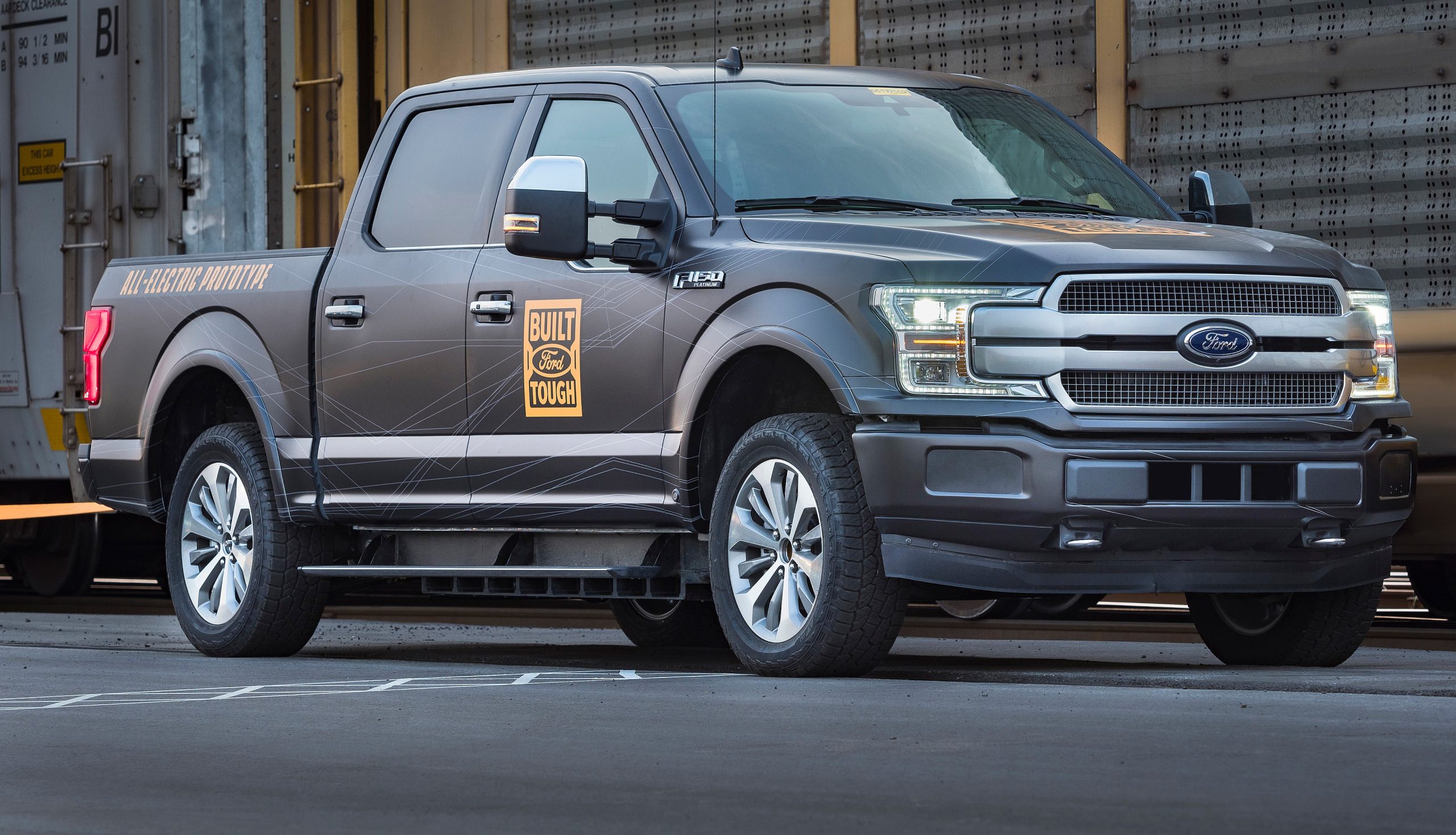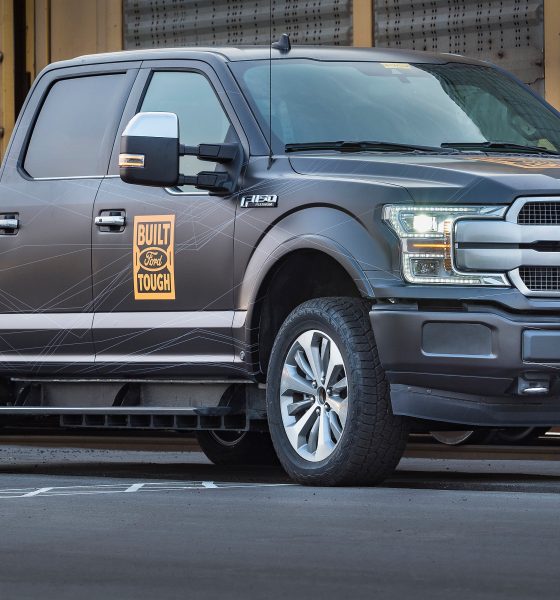

News
Ford study reveals 4 out of 10 Americans believe EVs are powered by gasoline
A study conducted by Ford has revealed that car buyers still have much to learn about the nature and advantages of all-electric cars. Based on the results of Ford’s study, there is still a lot of misinformation surrounding EVs as a whole. This is prominent in the US, where 42% of Americans stated that they believe electric cars still need to be filled up with gasoline to run.
The rather disconcerting results of the study, which involved respondents from the United States, Europe, and China, were shared on Medium by Ford Motor Company Global Director for Electrification Ted Cannis. According to the executive, there remains a gap between “what an electric vehicle can do and what customers believe they can do” among car buyers. This gap covers several areas, from the performance of EVs to the vehicles’ general ownership experience.
More than 90% of individuals polled by Ford, for one, stated that they don’t believe quick acceleration and a great driving experience is a benefit of electric cars. This is unfortunate, considering that premium electric cars such as the Porsche Taycan are quite literally built to be driven hard for extended periods of time, while vehicles like the Model 3 Performance routinely crush driver’s cars such as the BMW M3 on the track.
Around 67% of Americans and 68% of Europeans also believe that EVs are not capable for towing and hauling tasks. These findings are noteworthy for Ford, considering that the company previously demoed its F-150 EV prototype towing over 1 million pounds of cargo. Furthermore, almost 80% of Americans stated that they would not pick an EV because of extreme weather. Nearly 65% who are in the market for an AWD vehicle will not consider an electric car as well.
Yet, perhaps the starkest reminder of the information gap between mainstream car buyers and EVs lie in the fact that 42% of Americans among Ford’s respondents believe that electric cars are still powered by gasoline. There could be several reasons behind this misconception, one of which could be due to hybrids and plug-in hybrids, cars that are still equipped with an internal combustion engine, being dubbed as “electrified” vehicles.
Cannis stated that another possible reason for this misconception lies in the habits of consumers, as even owners of hybrid and plug-in hybrid vehicles still take regular trips to the gas station. Thus, the concept of “filling up” a car at home by plugging it in like a regular electronic device could seem unnatural to some consumers. The Ford executive added that this misconception is unfortunate, since surveys of all-electric car owners have revealed that 80% of an EV’s charging is done at home and at the workplace.
The Ford executive’s statements about the misconceptions surrounding electric vehicles are accurate. Tesla, despite producing electric vehicles for over a decade, deals with such misinformation consistently, as the company and its vehicles are still frequently misunderstood. The Tesla Model S Performance and the Model 3 Performance are very quick sedans, for example, but it won’t be difficult to find a driver who believes that the vehicles are just slow, “glorified golf carts.” Overall, Ford’s efforts at understanding the market’s pulse about EVs is admirable, and the findings of the study will hopefully guide the company in its strategy to roll out battery-electric vehicles like the F-150 EV in the near future.

News
Tesla FSD fleet is nearing 7 billion total miles, including 2.5 billion city miles
As can be seen on Tesla’s official FSD webpage, vehicles equipped with the system have now navigated over 6.99 billion miles.

Tesla’s Full Self-Driving (Supervised) fleet is closing in on almost 7 billion total miles driven, as per data posted by the company on its official FSD webpage.
These figures hint at the massive scale of data fueling Tesla’s rapid FSD improvements, which have been quite notable as of late.
FSD mileage milestones
As can be seen on Tesla’s official FSD webpage, vehicles equipped with the system have now navigated over 6.99 billion miles. Tesla owner and avid FSD tester Whole Mars Catalog also shared a screenshot indicating that from the nearly 7 billion miles traveled by the FSD fleet, more than 2.5 billion miles were driven inside cities.
City miles are particularly valuable for complex urban scenarios like unprotected turns, pedestrian interactions, and traffic lights. This is also the difference-maker for FSD, as only complex solutions, such as Waymo’s self-driving taxis, operate similarly on inner-city streets. And even then, incidents such as the San Francisco blackouts have proven challenging for sensor-rich vehicles like Waymos.
Tesla’s data edge
Tesla has a number of advantages in the autonomous vehicle sector, one of which is the size of its fleet and the number of vehicles training FSD on real-world roads. Tesla’s nearly 7 billion FSD miles then allow the company to roll out updates that make its vehicles behave like they are being driven by experienced drivers, even if they are operating on their own.
So notable are Tesla’s improvements to FSD that NVIDIA Director of Robotics Jim Fan, after experiencing FSD v14, noted that the system is the first AI that passes what he described as a “Physical Turing Test.”
“Despite knowing exactly how robot learning works, I still find it magical watching the steering wheel turn by itself. First it feels surreal, next it becomes routine. Then, like the smartphone, taking it away actively hurts. This is how humanity gets rewired and glued to god-like technologies,” Fan wrote in a post on X.
News
Tesla starts showing how FSD will change lives in Europe
Local officials tested the system on narrow country roads and were impressed by FSD’s smooth, human-like driving, with some calling the service a game-changer for everyday life in areas that are far from urban centers.

Tesla has launched Europe’s first public shuttle service using Full Self-Driving (Supervised) in the rural Eifelkreis Bitburg-Prüm region of Germany, demonstrating how the technology can restore independence and mobility for people who struggle with limited transport options.
Local officials tested the system on narrow country roads and were impressed by FSD’s smooth, human-like driving, with some calling the service a game-changer for everyday life in areas that are far from urban centers.
Officials see real impact on rural residents
Arzfeld Mayor Johannes Kuhl and District Administrator Andreas Kruppert personally tested the Tesla shuttle service. This allowed them to see just how well FSD navigated winding lanes and rural roads confidently. Kruppert said, “Autonomous driving sounds like science fiction to many, but we simply see here that it works totally well in rural regions too.” Kuhl, for his part, also noted that FSD “feels like a very experienced driver.”
The pilot complements the area’s “Citizen Bus” program, which provides on-demand rides for elderly residents who can no longer drive themselves. Tesla Europe shared a video of a demonstration of the service, highlighting how FSD gives people their freedom back, even in places where public transport is not as prevalent.
What the Ministry for Economic Affairs and Transport says
Rhineland-Palatinate’s Minister Daniela Schmitt supported the project, praising the collaboration that made this “first of its kind in Europe” possible. As per the ministry, the rural rollout for the service shows FSD’s potential beyond major cities, and it delivers tangible benefits like grocery runs, doctor visits, and social connections for isolated residents.
“Reliable and flexible mobility is especially vital in rural areas. With the launch of a shuttle service using self-driving vehicles (FSD supervised) by Tesla in the Eifelkreis Bitburg-Prüm, an innovative pilot project is now getting underway that complements local community bus services. It is the first project of its kind in Europe.
“The result is a real gain for rural mobility: greater accessibility, more flexibility and tangible benefits for everyday life. A strong signal for innovation, cooperation and future-oriented mobility beyond urban centers,” the ministry wrote in a LinkedIn post.
News
Tesla China quietly posts Robotaxi-related job listing
Tesla China is currently seeking a Low Voltage Electrical Engineer to work on circuit board design for the company’s autonomous vehicles.

Tesla has posted a new job listing in Shanghai explicitly tied to its Robotaxi program, fueling speculation that the company is preparing to launch its dedicated autonomous ride-hailing service in China.
As noted in the listing, Tesla China is currently seeking a Low Voltage Electrical Engineer to work on circuit board design for the company’s autonomous vehicles.
Robotaxi-specific role
The listing, which was shared on social media platform X by industry watcher @tslaming, suggested that Tesla China is looking to fill the role urgently. The job listing itself specifically mentions that the person hired for the role will be working on the Low Voltage Hardware team, which would design the circuit boards that would serve as the nervous system of the Robotaxi.
Key tasks for the role, as indicated in the job listing, include collaboration with PCB layout, firmware, mechanical, program management, and validation teams, among other responsibilities. The role is based in Shanghai.
China Robotaxi launch
China represents a massive potential market for robotaxis, with its dense urban centers and supportive policies in select cities. Tesla has limited permission to roll out FSD in the country, though despite this, its vehicles have been hailed as among the best in the market when it comes to autonomous features. So far, at least, it appears that China supports Tesla’s FSD and Robotaxi rollout.
This was hinted at in November, when Tesla brought the Cybercab to the 8th China International Import Expo (CIIE) in Shanghai, marking the first time that the autonomous two-seater was brought to the Asia-Pacific region. The vehicle, despite not having a release date in China, received a significant amount of interest among the event’s attendees.








